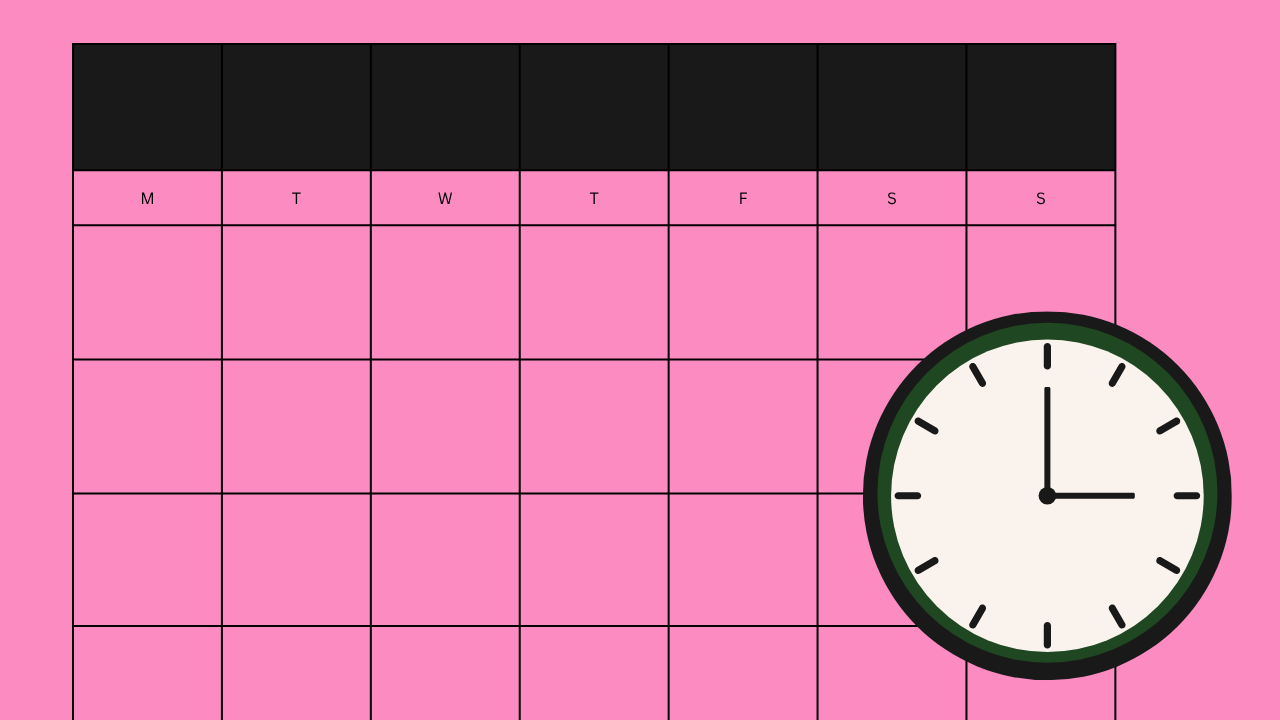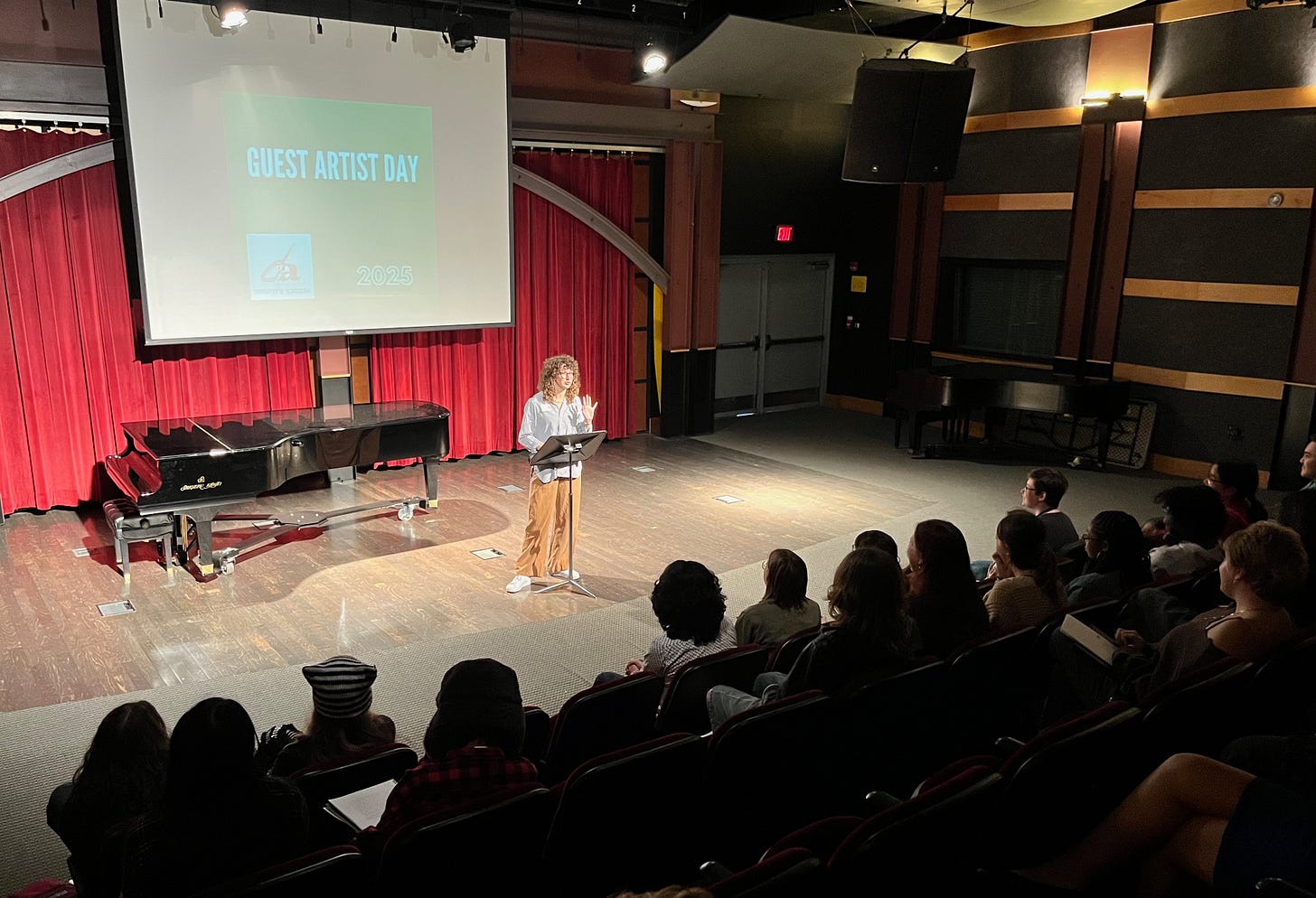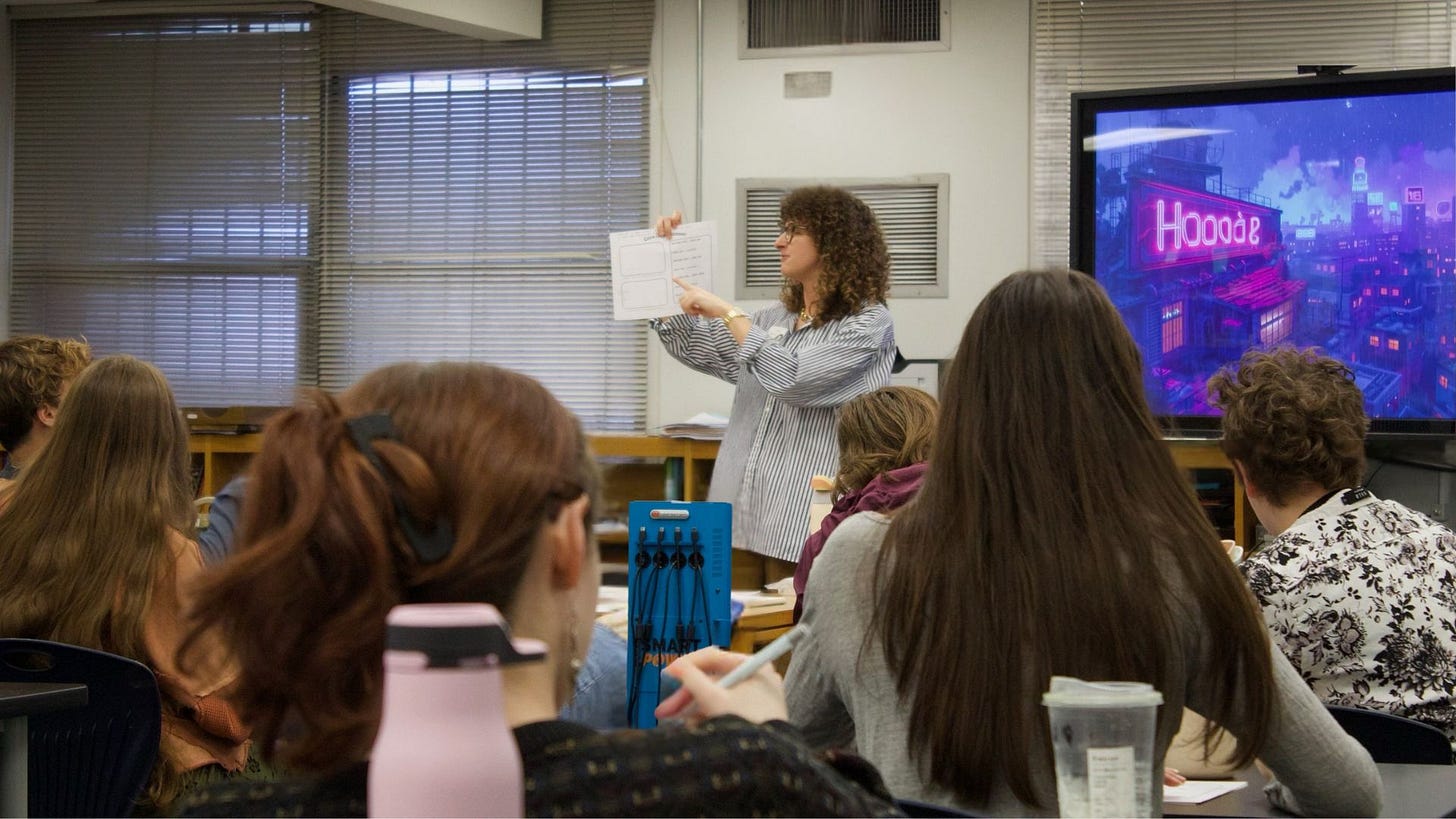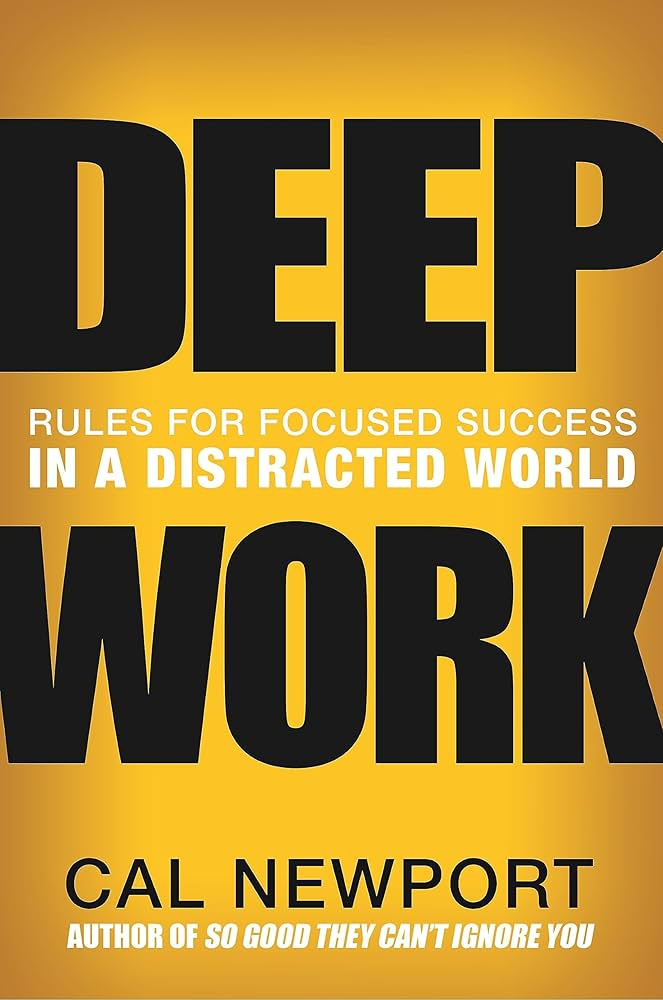Timeblocking for Writers
Find your writing time with this timeblocking exercise.
FINDING TIME TO WRITE
Last week, I had the grand pleasure of teaching the creative writing students at my local arts high school. I started class by asking: “How many of you think it’s easier to write during the school year than it is over the summer?”
I had a feeling that every single student would raise their hands. And I was right. That old adage about giving a job to a busy person? It’s even true among teenagers.
I led the group through one of my favorite routine-building exercises: timeblocking. I passed out an admittedly daunting-looking spreadsheet with 336 blank rectangles, one for every 30-minute increment of the week. I tasked the students with filling in their summer schedules to the best of their abilities.
I asked the students to be honest, not aspirational. I didn’t want them to rob themselves of a single teenaged joy.
Do you like to sleep until noon, or even 1 or 2? Let your timeblocking spreadsheet reflect that.
Are you hoping to snag that lifeguarding job at the community pool? Include that, too.
Are you saving up to go on that school trip to France next summer, taking as many babysitting gigs as humanly possible? Write those down.
And do you like staying up until 4AM playing Fortnite with your friends? By all means, be my guest.
Block out an average summer week at home. That was the assignment. Honest guesstimations only.

I do a timeblocking exercise every week. By hand, I jot my appointments and duties into a timeblocking spreadsheet. I schedule in my writing time, and if I have additional free spaces, I try to use some of that time for writing or reading or journaling.
Download a free timeblocking worksheet.
I typically use my Sterling Ink planner to timeblock, but you can also use this free printable I made. Of course, you can also make your own by hand: draw a table with seven columns, one for each day of the week, and rows in equal increments of time. I like 30-minute chunks, but I’ve seen some people chunk it out by the hour. Some folks timeblock in 15-minute increments: sounds kind of nice, honestly, because you can add 15-minute breaks for yourself!
“What if we stopped trying to master time and mapped it instead?” Cody Cook-Parrott asked this question their newsletter this week.
I think of timeblocking as a mapping exercise.
Some of you may finish this timeblocking your week and find that you have more time than you thought you would to write.
Others will complete the grid with your average week-in-the-life and will feel totally overwhelmed by it. Perhaps you’ll see on paper that you’re running from one thing to the next, hardly fitting in time to just stand still and breathe, let alone open a Word doc and write some paragraphs.
🐝 A word to the latter group of busy bees: the time is there, but it may exist in the in-betweens. The time is there, but it may be in that five minutes between meetings, and the writing may happen on an index card you can pull from a pack you start keeping in your desk drawer for that express purpose.
The time is there, but it may happen in your Notes app while you’re in the school pick-up line or waiting in the parking lot during your daughter’s basketball practice.
The time is there, but once you find it, try immediately cutting it in half, giving yourself the other half to make the grocery list and call the plumber back, maybe squirreling a smidge of it for a few pages’ worth of reading time.
Because none of us can write on an empty tank.
Download a free timeblocking worksheet.
RECOMMENDED READING ↴
I loved Kara Cutruzzula’s recent newsletter on the beauty of the 48-hour notice: a strategy to combine the best energies of planning and spontaneity.
As I plan out my upcoming class on routines, I’ve been revisiting Cal Newport’s book Deep Work: Rules for Focused Success in a Distracted Work, where I first learned about the concept of timeblocking. If you haven’t read it, I recommend it with a few grains of salt. It’s definitely more of a business book than a creativity book, and Newport’s framework for deep work is a bit extreme. Take what works for you and leave the rest.
Currently reading and relishing and adoring Vauhini Vara’s brand spankin’ new book Searches: Selfhood in the Digital Age. It’s the first time in a while that I picked up a book based on cover design alone (which includes an AI description of the painting on the cover), and so far, the writing has been profound and personal and confronting.
Download a free timeblocking worksheet.





Timeblocking is such a critical skill to have! I'm glad you shared it with these students.
And Searches is such a powerful and captivating book - I tore through it on the train to and from NYC last week. It wasn't the only book I brought along with me, but it's the only one I read on the trip. I love how Vara considers her experiences in such an open-ended way; it's an exploratory book, not one that attempts to work towards a predetermined conclusion, and I find that to be rare outside of poetry these days.